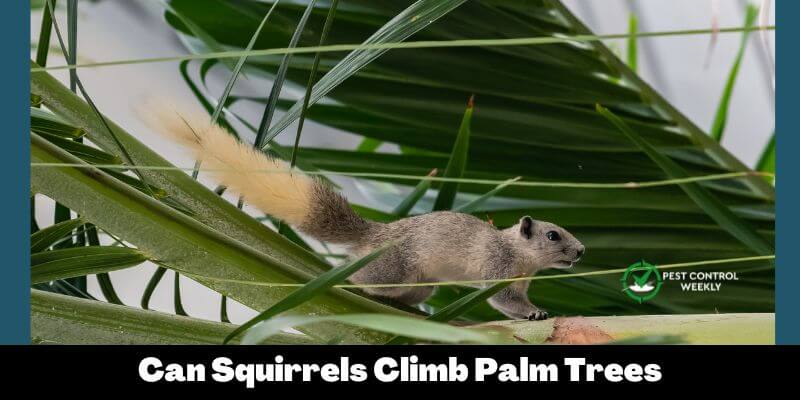Squirrels are adorable but destructive, especially when looking for food, and can climb trees and turn an entire environment upside down. But I’m curious, can squirrels climb palm trees?
Yes, squirrels can climb palm trees. Palm trees produce a wide range of fruits and dates, including coconuts and even tree buds. As Squirrels like all these, they climb a palm tree to eat them.
They can tend to jump to the top of a tree and from one branch to another. To learn more about which squirrels can climb palm trees and how to keep them away from doing so.
Can Gray Squirrel Climb Palm Trees?
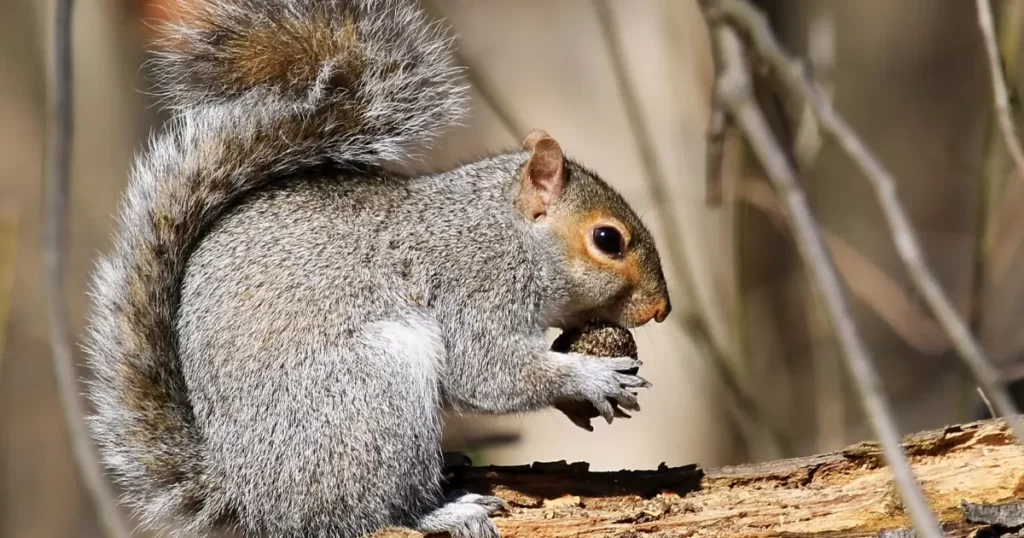
Yes, Grey squirrels can climb palm trees. Grey squirrels eat the nutrient-dense sap under the bark of tree trunks and branches. Severe damage can kill a tree, whereas milder cases cause scarring, serving as a point of entry for other tree diseases and pests.
Grey squirrels are large deciduous woodland animals that rely on the large seeds of trees such as oak, beech, hazel, sweet chestnut, and walnut. These small animals eat palm fruit and nuts, tree branches and stem bark, leaf buds, leathery newly developed leaves, small tender twigs, and the inner bark of tree trunks and branches.
Grey squirrels eat the nutritious sap beneath the bark of tree trunks and branches. Severe damage can kill a tree, whereas milder cases cause scarring, which is an entry point for other tree pests and diseases.
Can Indian Palm Squirrel Climb Palm Trees?
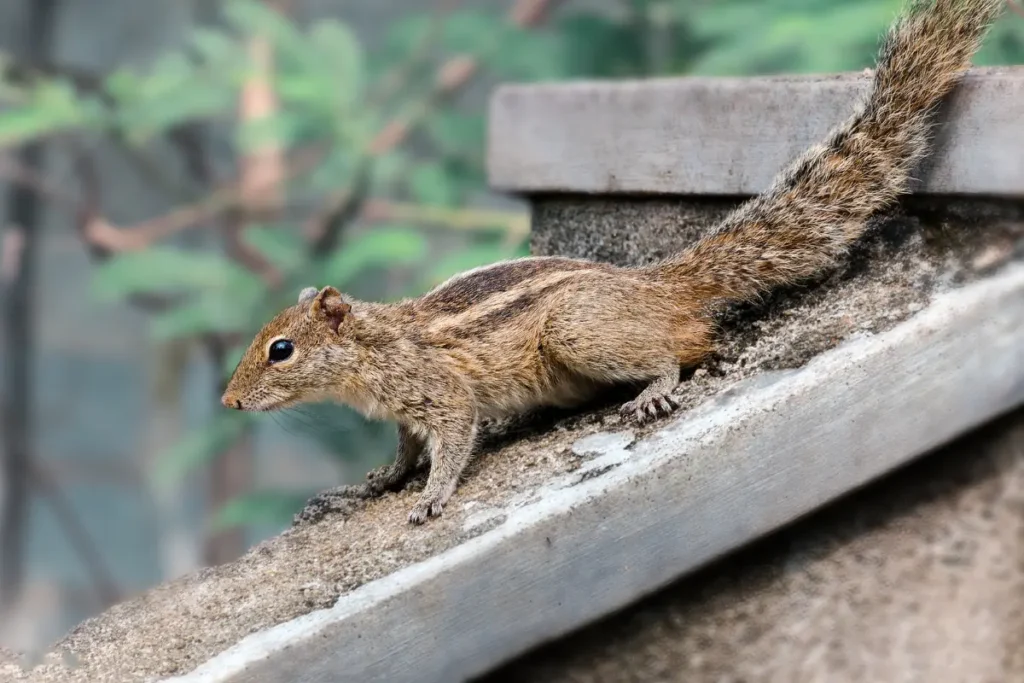
Yes, the Indian palm squirrel can climb palm trees. The Indian palm squirrel is an omnivore. They primarily consume nuts and fruits but will also consume seeds, insects, small mammals and reptiles, eggs, and occasionally bird chicks.
Indian squirrels climb palm trees and nibble at the tips of the frayed palm leaves, which produce new growth.
They prefer to climb palm trees but will sometimes forage on the ground. They move in quick darting movements and climb with incredible agility. Northern palm squirrels build their nests in trees, usually pines or exotic palms.
Unlike other squirrel species, the palm squirrel does not hibernate and only emerges in winter in the late afternoons of sunny days. Their transformation is rapid and rushing, and they can climb with excellent mobility.
Due to its unexpected color change, the Indian palm squirrel is also known as a three-striped squirrel.
Can Flying squirrels Climb Palm Trees?
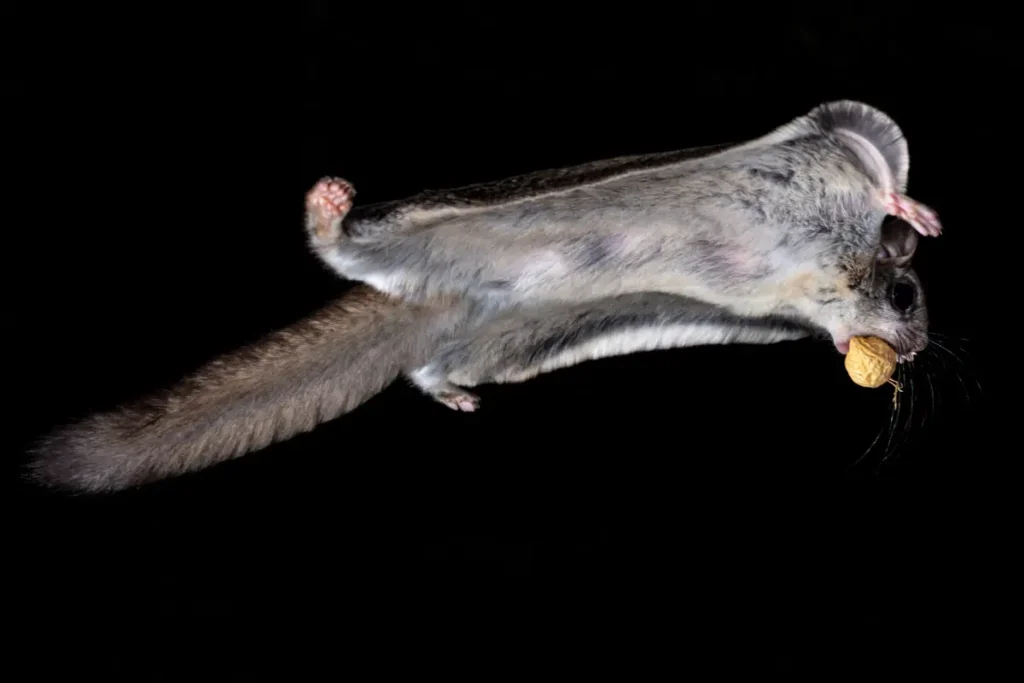
Yes, Flying Squirrels Can Climb palm trees. The most arboreal and terrestrial of the tree squirrels are flying squirrels. Although they forage on the ground, flying squirrels spend most of their time in trees, climbing, walking, or running along branches and hopping over obstacles.
They have razor-sharp claws for gripping surfaces. This allows for quick and agile movements while head-first climbing up and down palm trees. They also have powerful hind legs and double-jointed, hyper-extendable wrists, allowing them to turn at breakneck speed. They have a special membrane that connects their front and back legs, allowing them to glide through the air between trees.
All squirrels can climb trees. On the other hand, tree squirrels and flying squirrels are better at climbing trees than ground squirrels.
Do Squirrels Live In Palm Trees?
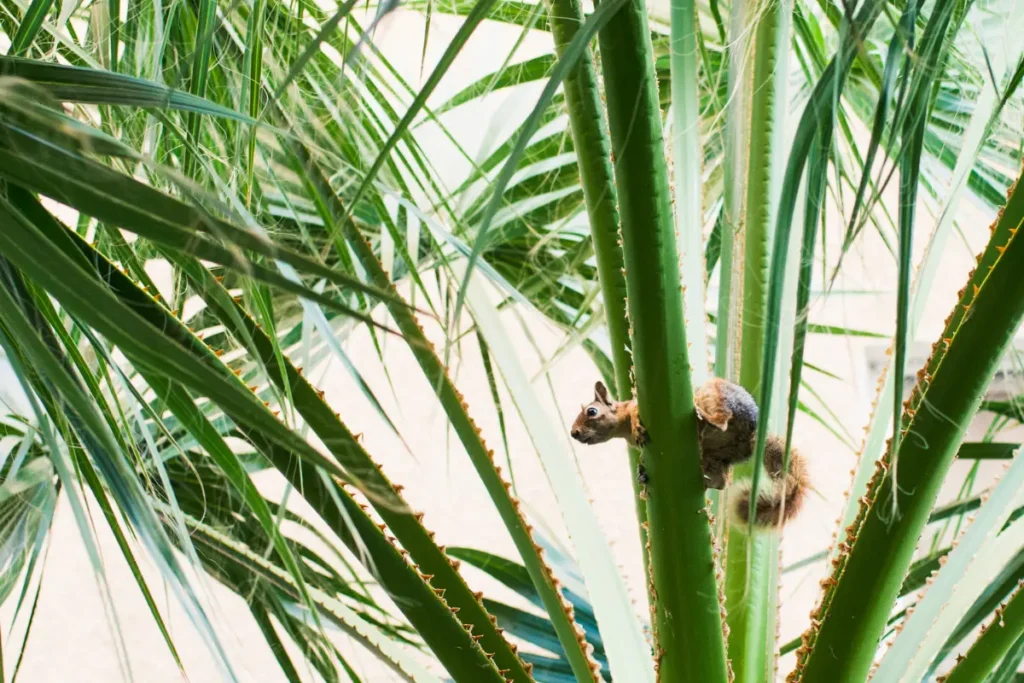
Yes, Squirrels do live in palm trees. Squirrels and other wildlife use palm trees for nesting and roosting. Squirrels prefer to live in trees, particularly palm trees, where they are protected from the elements and predators’ prying eyes (or angry homeowners ready to get rid of them).
They can also spread from palm trees in your yard to your home’s roof and then into the rest of the structure, bringing disease and damage with them like other rodents and squirrels gnaw on things, but because of their greater size, they can cause far more damage.
They’re probably making nests in the palms with any of those fronds. Of course, there’s always the chance they have a still hidden up in the top of a palm and are busy distilling some Kickapoo Palm Joy Juice for their edition and enjoyment.
Do Squirrels Damage Palm Trees?

Yes, Squirrels can damage palm trees. Ground and tree squirrels can cause severe damage to palms. They can be found in a wide range of agricultural and rural environments. Palms in public areas, wild places, creches, and home gardens may suffer due to their adverse effects.
As squirrels are rodents, biting causes the majority of palm damage. They feed on the muscle tissue of the meristematic and vegetative growth palms.
If left unchecked, the damage to palms can be fatal, destroying entire groves. A squirrel will clean the palm panicle, infructescence, and the adventitious roots and petioles.
Habitats made by ground squirrels can cause palm root damage and desiccation. Squirrels can also cause secondary issues. Squirrels are eating on water pipes and agricultural lines. Nibbling also harms wood structures, power lines, and the buds of palm trees.
Which Other Animals Climb Palm Trees Other Than Squirrels?
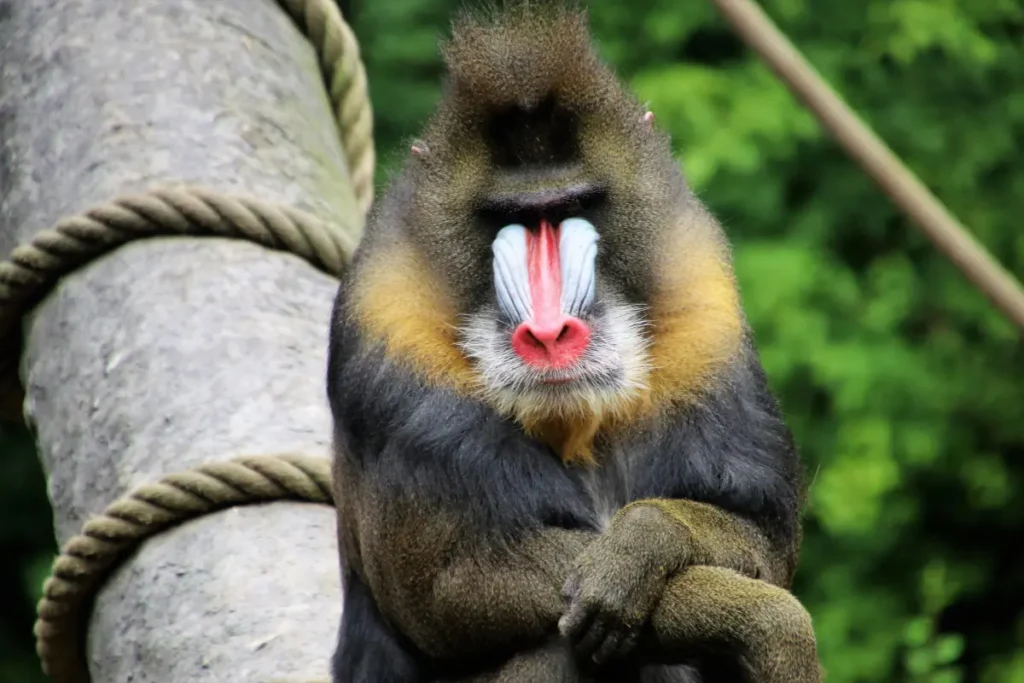
Baboons, lizards, pandas, badgers, and cougars are among the animals that climb palm trees. Many animals climb palm trees for a variety of reasons. Some do it to find food, others to avoid predators, and others simply because they can.
A wide range of different species live in palm trees or rely on them for food. There are approximately 2,600 other species of palm trees in the Arecaceae or Palmae family. The golden-plumed parakeet, for example, nests exclusively in wax palm tree cavities in some areas.
Many different types of animals can be found in each of these species. Hundreds of bird species feed on palm tree fruit and nest in their branches. Many invertebrates are found in palm tree species.
Some mites, roundworms, and moths spend their entire lives on a single palm tree. Furthermore, mammals such as civets and Squirrel monkeys sleep in palm trees.
[5] Methods To Stop Squirrels From Climbing Palm Trees
There are various techniques and factors for keeping squirrels away from palm trees. Explore more about the five most popular.
1- The Tin Foil Method
Wrap a strong sheet of tin or aluminum around the tree for this method. Squirrels cannot climb the tree once it has been wrapped in tin foil. This technique should be used with caution because leaving the tin foil on the tree can induce it to denature.
Furthermore, squirrels can climb the tree if they can access it through the roof or branches. Remove any interfering extremities and hang the piece of paper 5 to 6 feet above the ground, as squirrels can climb that far.
2- Keep Dog to Scare Squirrels

Squirrels are naturally scared of dogs. You can, indeed, use your dogs. If the tree is in a fenced-in backyard, you can let your dogs run free, and the squirrels will most likely disperse or find another location to invade.
It should be noted that this method may cause squirrels to climb to higher parts of the tree, potentially breaking more branches and causing tree damage to the tree’s top. Also, undoubtedly, this method is only effective if dogs are around in the squirrels.
3- Protect Trees By Using Wildlife Netting

Wildlife netting is a mesh material that can be draped over and wrapped around your fruit trees. To avoid injuring or trapping wildlife, ensure the plastic netting is taut and securely fastened. It should be noted that while bird netting deters birds, it may not deter squirrels.
Squirrels have been observed chewing and scratching their way through the mesh to reach the fruits on trees. Squirrels can be kept with wire fencings such as hardware cloth, plastic bird netting, or chicken wire. Ensure the wire is buried deep enough that they can’t dig under it.
4- Mint And Other Plants

Squirrels are among the pests that are repulsed by the scent of mint. Plant some mint under your fruit trees or make a spray with peppermint or peppermint oils and water compared to the hot pepper spray.
Other trees you can try planting around your fruit trees to create a barrier. Squirrels are less likely to cross marigolds, nasturtiums, and mustard. Mix a small bottle of hot sauce with a gallon of water to make your hot pepper spray. You can use a spray bottle to apply it to your fruit trees.
5- The Hot Pepper Method
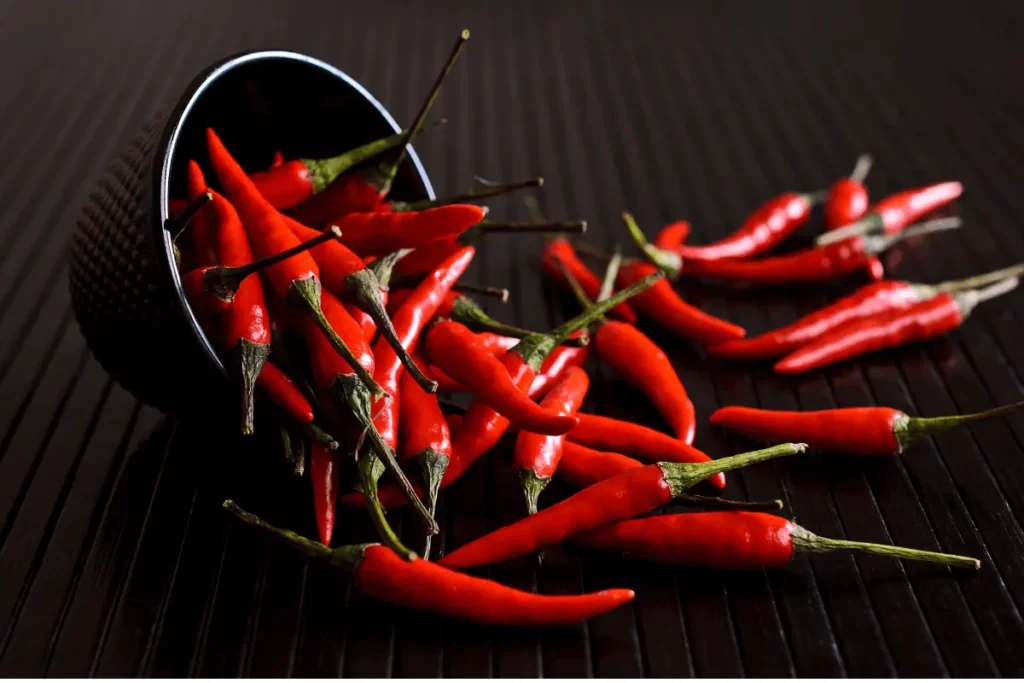
Squirrels don’t like the taste or smell of capsaicin, which is the ingredient that gives hot peppers their heat. You can make your freshly made deterrent using hot pepper. It is simple to spread the powder around the tree. Combine one tablespoon of powder with two cups of water to make your spray.
While the ingredient to make this deterrent is simple, it can be tough to implement. Because the red pepper will be washed away with rainwater, this solution may be more temporary. Furthermore, the spray should be applied to most of the tree to ensure that your entire tree is protected.
Conclusion
Squirrels are fast creatures that are always on the lookout for seeds, nuts, and berries. They enjoy exploring and jumping from one tree to the next. They climb up and down from the trees as well. They facilitate their access to food sources in this manner.
Squirrels prefer healthy trees, especially if they are apple or palm trees, which are common in many homes. Squirrels can do more damage than you think to your palm trees, so protecting them is critical.
As a result, you must humanely dispose of them. Aside from living traps, the above methods can be used.
References
Mohan, C., Josephrajkumar, A., Thube, S.H., Saneera, E.K., Mani, M. (2022). Pests and Their Management in Cocoa. In: Mani, M. (eds) Trends in Horticultural Entomology. Springer, Singapore
